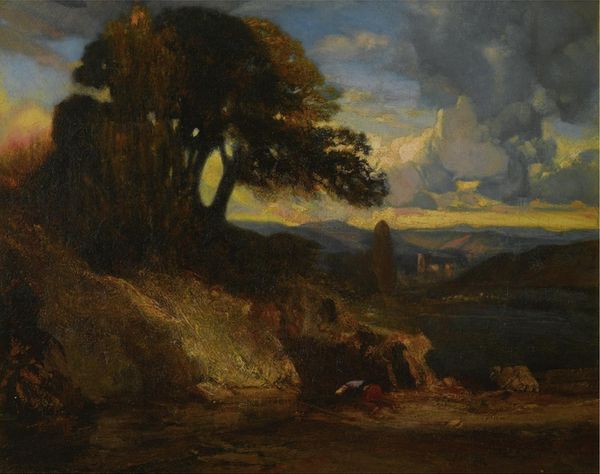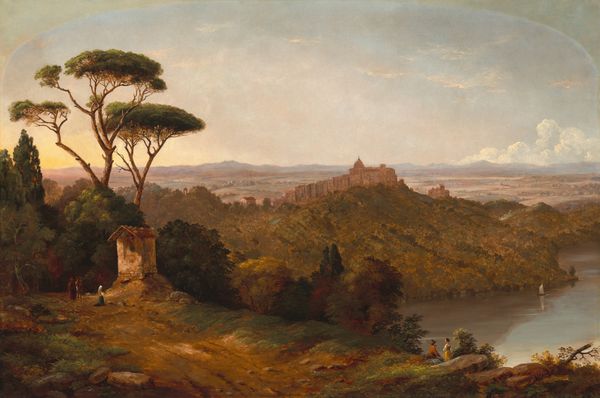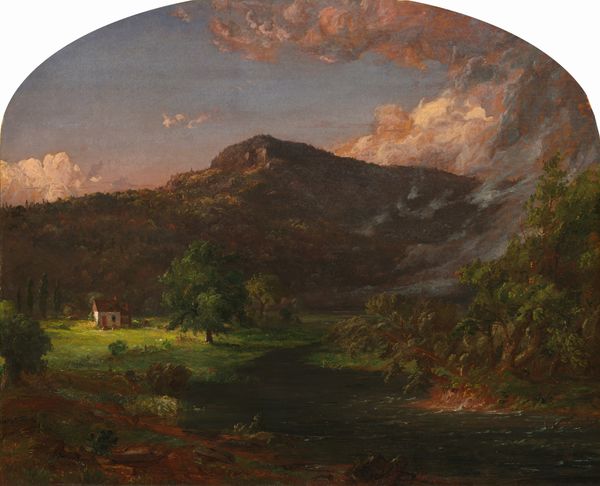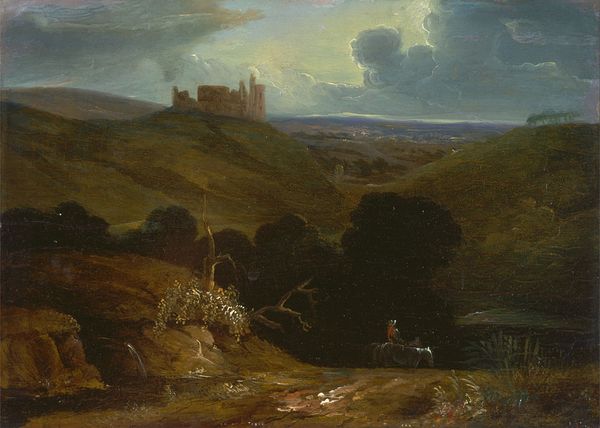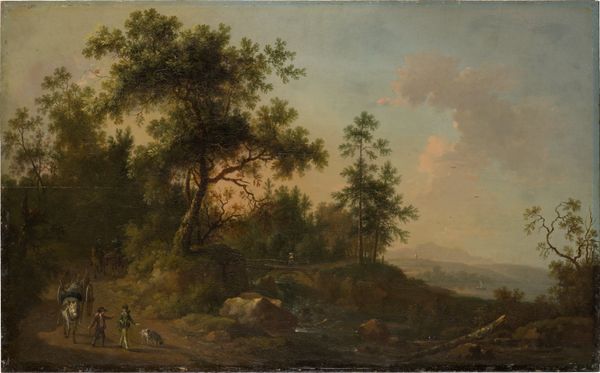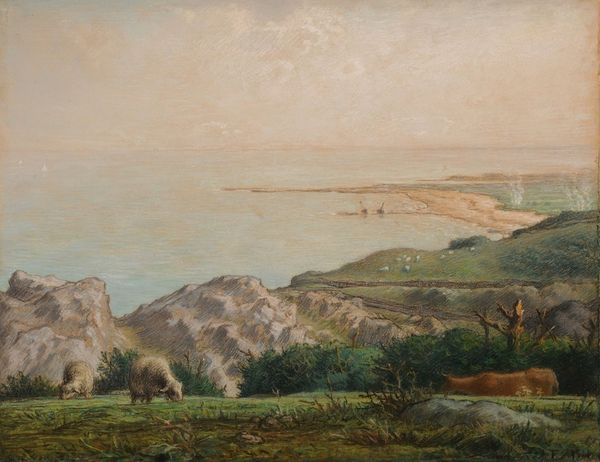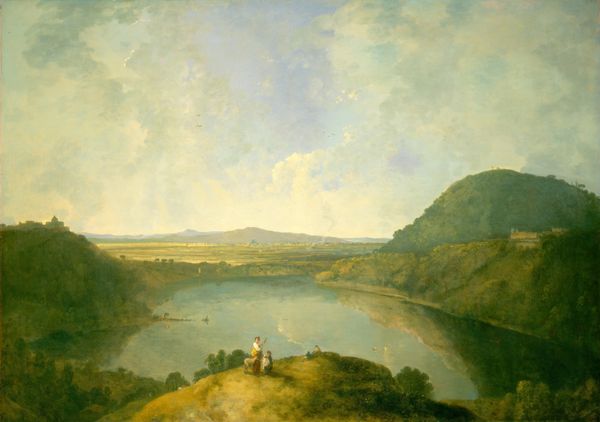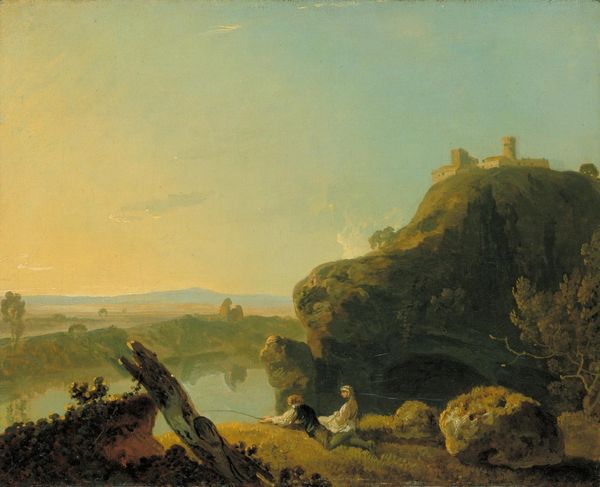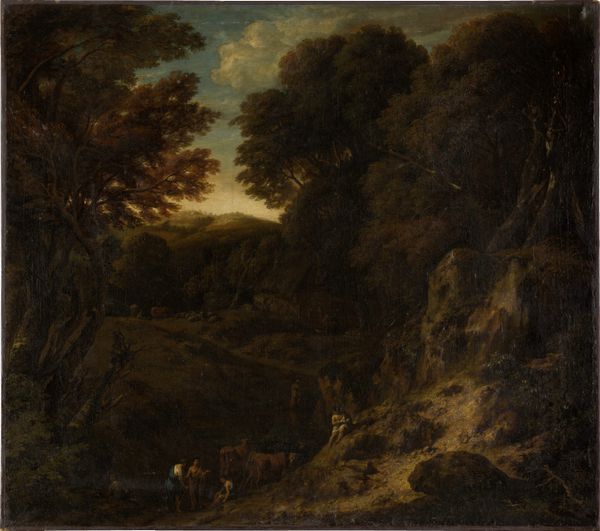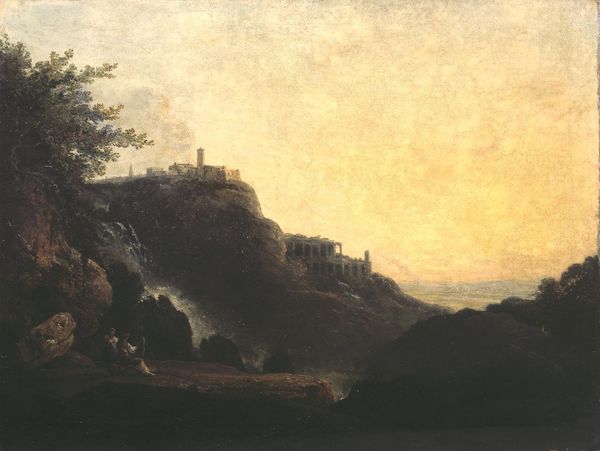
painting, oil-paint
#
water colours
#
painting
#
oil-paint
#
landscape
#
figuration
#
oil painting
#
romanticism
Dimensions: 55.7 x 55.7 cm
Copyright: Public Domain
Editor: This is "Greek Landscape on the Island of Aegina" by Carl Rottmann, painted between 1842 and 1845. It's an oil painting. The overall effect is one of serenity, though there's also something slightly melancholic in the muted tones. I am really drawn to its visual composition. What do you see in this piece? Curator: I am immediately struck by the composition. Rottmann utilizes a distinct separation between foreground and background, almost creating two distinct planes. This heightens the pictorial depth and enhances our experience of pictorial space, though in doing so, perhaps he sacrifices some perspectival realism. What do you think about the interplay of light and shadow across this division? Editor: I notice how the foreground is darker, shaded, which really accentuates how brightly lit the background is. The building or ruin on the hill glows. I think I also notice a lot of horizontal lines in the mid and backgrounds and not so much in the fore. Curator: Precisely. Notice how the light, almost centered in the composition, interacts with that distant architecture and casts everything in its glow. This, combined with the artist’s precise and skillful handling of paint texture, especially in the foliage, makes the geometry within the work appear more structured and emphasizes the visual relationships Rottmann creates. Are there other geometries that are repeated? Editor: You're right; there's definitely something happening with repeated circular forms: the overall canvas shape, the sun or moon, the round hilltop, all balanced in the frame, that gives it all an integrated wholeness. Curator: Absolutely, the repetition of these circular forms is critical. Now, consider the semiotic implications; the island is an island as depicted by the circle; how does this visual form add to the understanding of the context? Editor: I hadn’t thought of it like that, seeing it now has made me think more about its artistic intention rather than the context. It makes the location the centre of the artistic intention, making the island almost symbolic. I'll definitely pay more attention to the structural and geometric relationships in landscape paintings going forward.
Comments
No comments
Be the first to comment and join the conversation on the ultimate creative platform.
